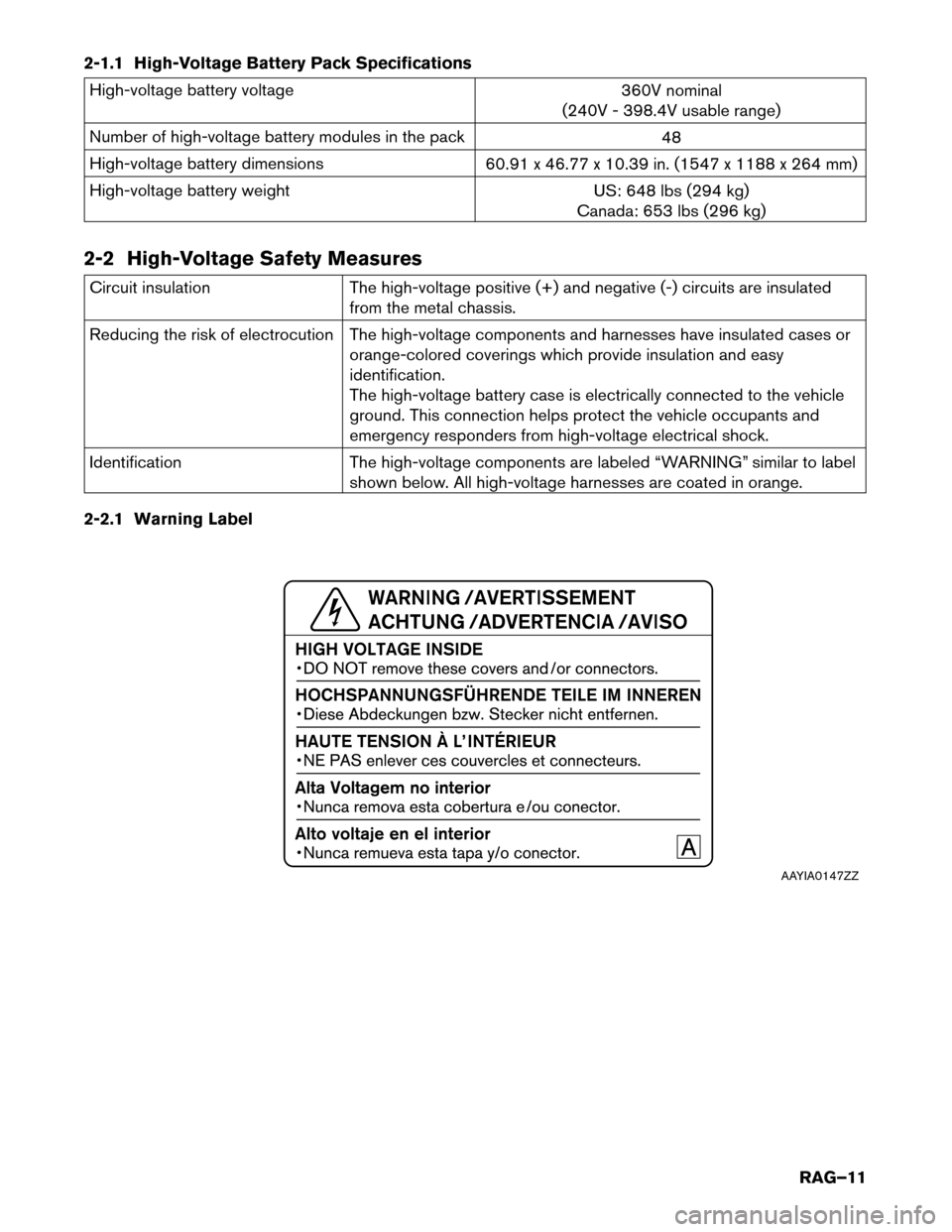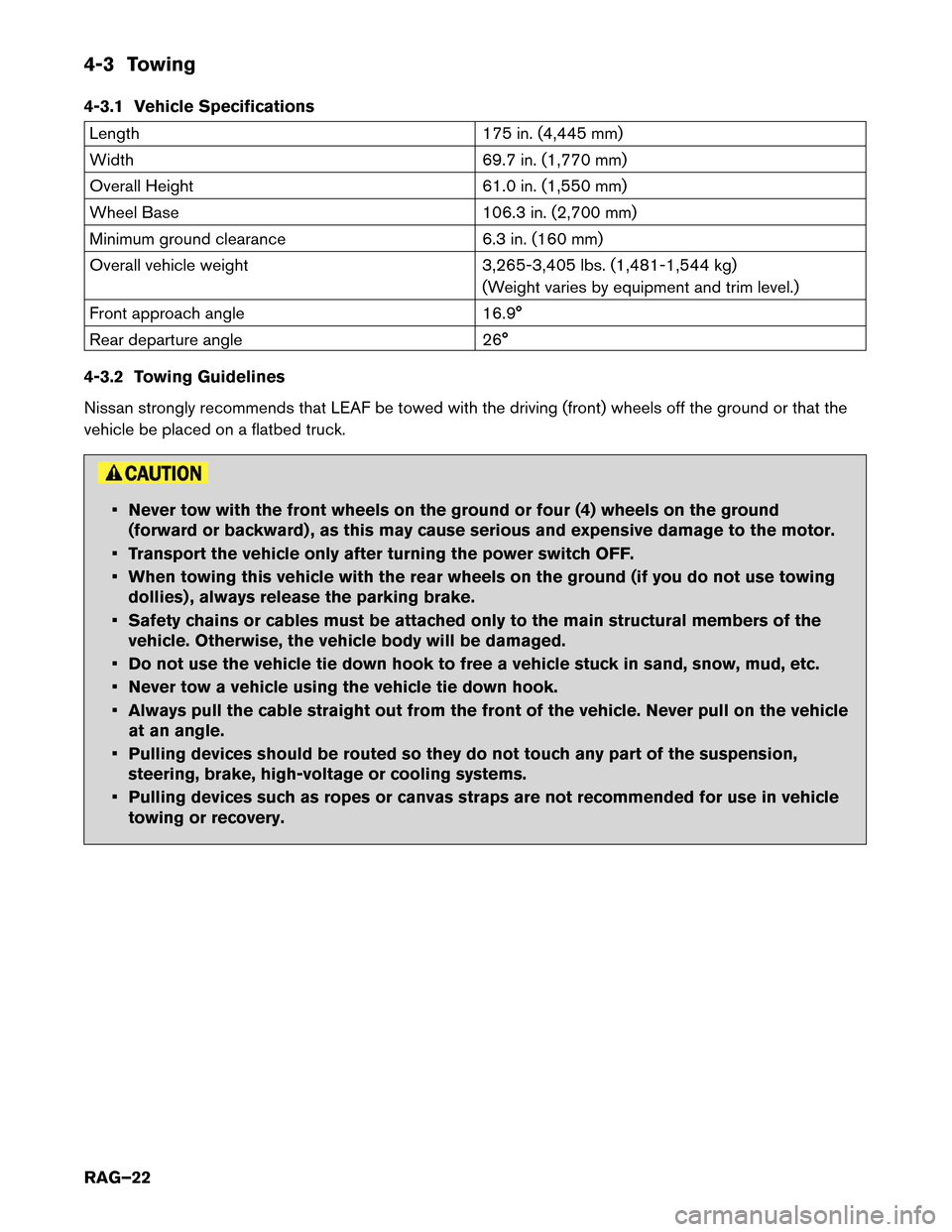weight NISSAN LEAF 2017 1.G Roadside Assistance Guide
[x] Cancel search | Manufacturer: NISSAN, Model Year: 2017, Model line: LEAF, Model: NISSAN LEAF 2017 1.GPages: 39, PDF Size: 1.32 MB
Page 11 of 39

2-1.1 High-Voltage Battery Pack Specifications
High-voltage battery voltage
360V nominal
(240V - 398.4V usable range)
Number of high-voltage battery modules in the pack 48
High-voltage battery dimensions 60.91 x 46.77 x 10.39 in. (1547 x 1188 x 264 mm)
High-voltage battery weight US: 648 lbs (294 kg)
Canada: 653 lbs (296 kg)
2-2 High-Voltage Safety Measures Circuit insulation
The high-voltage positive (+) and negative (-) circuits are insulated
from
the metal chassis.
Reducing the risk of electrocution The high-voltage components and harnesses have insulated cases or orange-colored coverings which provide insulation and easy
identification.
The high-voltage battery case is electrically connected to the vehicle
ground. This connection helps protect the vehicle occupants and
emergency responders from high-voltage electrical shock.
Identification The high-voltage components are labeled “WARNING” similar to label
shown below. All high-voltage harnesses are coated in orange.
2-2.1 Warning Label AAYIA0147ZZ
RAG–11
Page 22 of 39

4-3 Towing
4-3.1
Vehicle Specifications Length
175
in. (4,445 mm)
Width 69.7 in. (1,770 mm)
Overall Height 61.0 in. (1,550 mm)
Wheel Base 106.3 in. (2,700 mm)
Minimum ground clearance 6.3 in. (160 mm)
Overall vehicle weight 3,265-3,405 lbs. (1,481-1,544 kg)
(Weight varies by equipment and trim level.)
Front approach angle 16.9°
Rear departure angle 26°
4-3.2 Towing Guidelines
Nissan strongly recommends that LEAF be towed with the driving (front) wheels off the ground or that the
vehicle be placed on a flatbed truck. • Never tow with the front wheels on the ground or four (4) wheels on the ground
(forward
or backward) , as this may cause serious and expensive damage to the motor.
• Transport the vehicle only after turning the power switch OFF.
• When towing this vehicle with the rear wheels on the ground (if you do not use towing dollies) , always release the parking brake.
• Safety chains or cables must be attached only to the main structural members of the vehicle. Otherwise, the vehicle body will be damaged.
• Do not use the vehicle tie down hook to free a vehicle stuck in sand, snow, mud, etc.
• Never tow a vehicle using the vehicle tie down hook.
• Always pull the cable straight out from the front of the vehicle. Never pull on the vehicle at an angle.
• Pulling devices should be routed so they do not touch any part of the suspension, steering, brake, high-voltage or cooling systems.
• Pulling devices such as ropes or canvas straps are not recommended for use in vehicle towing or recovery.
RAG–22